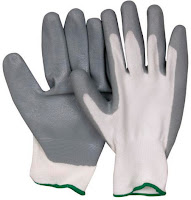Medical gloves are disposable gloves used during medical examinations and procedures that help prevent contamination between caregivers and patients.
provide both hospital staff and patients protection from microbes, being essential to providing the best quality healthcare. As glove manufacturers continue to introduce new exam gloves to the health care industry, choosing the best medical gloves can seem like a daunting task. All medical gloves will provide adequate protection against
, so the major factors influencing the medical exam glove will be the comfort & fit as well as how much it will cost.Medical gloves are made of several different polymers including
is to provide you adequate protect against bloodborne pathogens. Considering how necessary disposable medical gloves for providing proper healthcare, it is not uncommon for these protective gloves to be a high expense for medical facilities. For this reason, some healthcare facilities have adopted using just a single type of exam glove or even using a one-size fits all to cut down on costs.
Pros
High Tactile Sensitivity
Latex Allergy
Very Durable
Dry, Irritated Skin
Comfortable
Cons
Latex Allergy
Very Durable
Latex allergy and alternative materials:
Due to the increasing rate of latex allergy among health professionals, as well as in the general population, gloves made of non-latex materials such as vinyl, nitrile rubber or neoprene have become widely used. Chemical processes may also be employed to reduce the amount of antigenic protein in Hevea latex, resulting in alternative natural-rubber-based materials such Vytex Natural Rubber Latex. However, non-latex gloves have not yet replaced latex gloves in surgical procedures, as gloves made of alternative materials generally do not fully match the fine control or greater sensitivity to touch available with latex surgical gloves.
Difference between latex and rubber:
Latex is made of natural rubber. It is found in tropical rubber trees and used in many products. During the latex-making process, various chemicals and preservatives are added to the mix. So, if somebody has a latex allergy, they might not be allergic necessarily to the rubber itself but one of the chemicals added in during the process.
Differences Between Latex & Vinyl Gloves:
Latex and vinyl gloves have long been used in the healthcare and food industries to prevent the spread of harmful bacteria and germs. Without the protection of a sanitary barrier between food and the hands of the preparer, your food could carry contaminants that would spread a dangerous infection that could cost lives. In the healthcare industry, gloves help to guard you from contracting a patient's illness and possibly life-threatening viruses.
Allergens:
The natural rubber found in latex gloves may cause allergies in some people with repeated exposure to the material. Susceptible persons typically have had frequent surgeries, surgeries while very young or hold a healthcare profession.
Vinyl gloves are made from synthetic material that is not commonly seen as allergenic. However, recent information regarding the use of accelerators, chemicals used during production, may cause a slow reaction in some people
Cost:
The overall cost of latex and vinyl gloves depends greatly on the exact purpose for which they will be used. A box of medical-grade, powdered vinyl gloves, 100 count , will cost $5.99, and a food service-grade, 100-count box of powder-free gloves will cost $5.49. Gloves may be either powdered or nonpowdered and either 5 mm or 6.5 mm in thickness.
The latex glove can also be found in powdered and nonpowdered types, with a slight difference in cost as well. A 100-count box of medical-grade, powder-free latex gloves will cost $7.99. Latex food-service gloves, 100-count box, will cost $5.99
Advantages of Latex Gloves:
The great thing about latex gloves is that they aren't designed to be used twice. This then means that you handle a patient and then swap your gloves for new ones so you won't transfer bacteria from one person to another. This is a practice that is used with many types of medical supplies and is more effective than simply sanitising.
Latex gloves also protect the patients from the staff themselves, and you might be surprised to know that many bacteria exist on the skin of healthy adults that is completely harmless to them but that can cause serious illness if it comes into contact with an open wound or a patient with a lower immune system.
Disadvantages of Latex Gloves:
As with most things these days there has been an increase in skin reactions to latex gloves. This has been found to apply primarily to those people who have prolonged exposure throughout the day, each day of the week. Hence people who use latex gloves as a barrier in their work are most prone to ending up sensitized to latex gloves. This has been in the most part, attributed to the increased awareness of protection of the medical practitioner.



